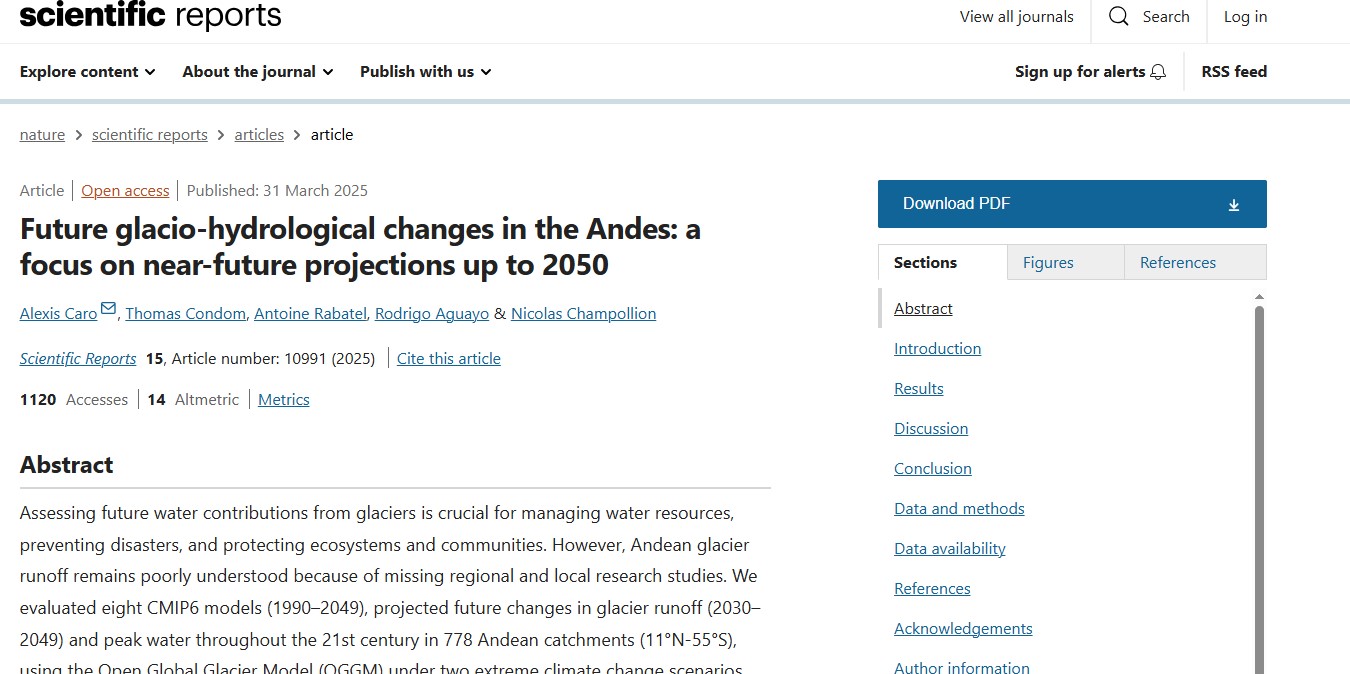ABSTRACT
Assessing future water contributions from glaciers is crucial for managing water resources, preventing disasters, and protecting ecosystems and communities. However, Andean glacier runoff remains poorly understood because of missing regional and local research studies. We evaluated eight CMIP6 models (1990–2049), projected future changes in glacier runoff (2030–2049) and peak water throughout the 21st century in 778 Andean catchments (11°N-55°S), using the Open Global Glacier Model (OGGM) under two extreme climate change scenarios (SSP1-2.6 and 8.5). Projections for the mid-21st century show warming trends across the Andes, particularly in the Tropical Andes (+ 0.7 °C), while precipitation declines slightly in the Southern Andes (-1 to -3%). These changes significantly impact glacier runoff, with substantial decreases projected for the Tropical Andes (-43%) and Dry Andes (-37%) by 2030–2049. Notably, changes in glacier runoff vary greatly across the Dry Andes, as evidenced by the simulations for the Atuel (-62%) and Tupungato (+ 32%) catchments in Argentina. More than 95% of Andean catchments are expected to reach peak water before 2030 (75th percentile), with significant regional differences. Our study highlights the critical need to examine regional disparities in glacier runoff at the catchment scale, particularly in the Dry Andes of Chile and Argentina. It calls on these governments to actively fund hydrological research in this region, which is essential for effectively managing current and future water resources.
